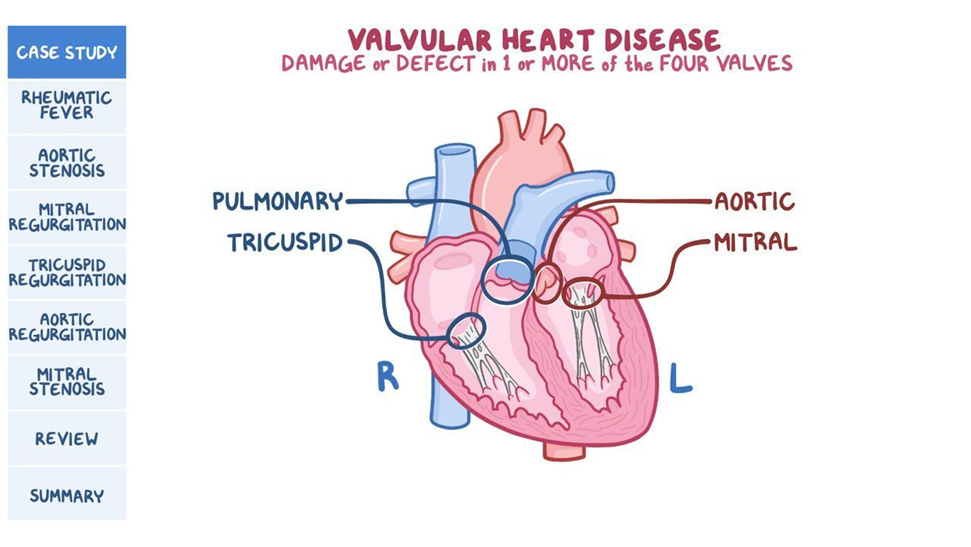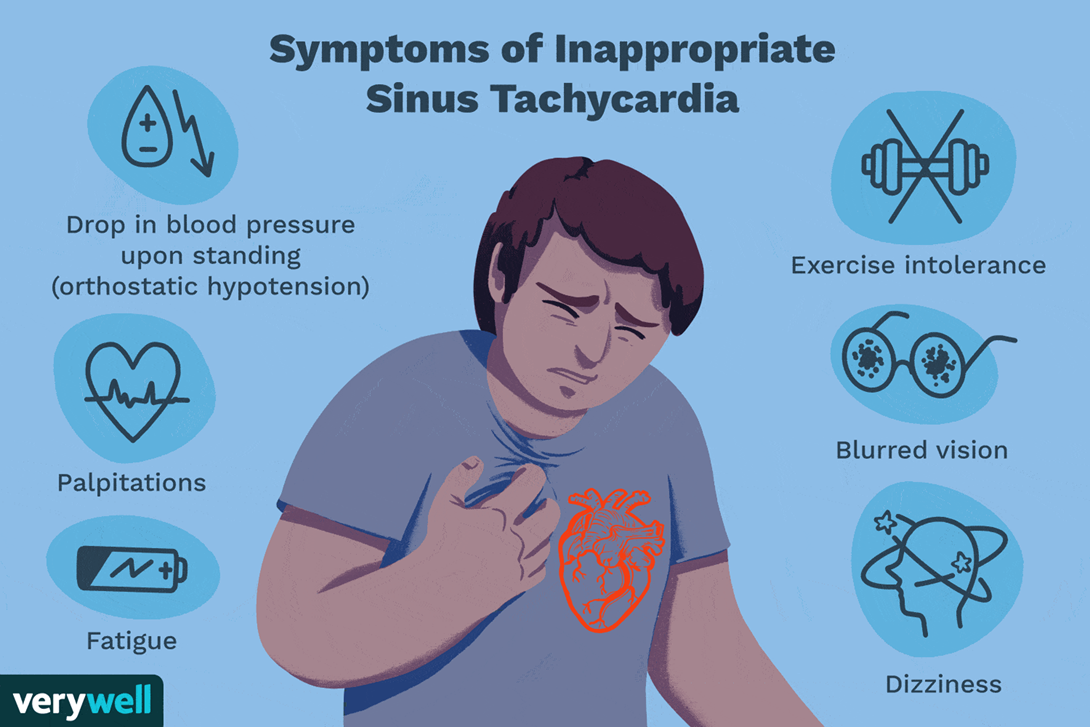A nurse is assessing a client who has valvular dysfunction. Which of the following manifestations should the nurse anticipate? (Select all that apply)
Heart murmur
Chest pain
Varicose veins
Palpitations
Abdominal pain
Correct Answer : A,B,D
Choice A reason:
Heart murmur is a common manifestation of valvular dysfunction. It occurs when there is turbulent blood flow across a damaged or abnormal heart valve. This can be due to stenosis (narrowing of the valve) or regurgitation (leakage of the valve). The murmur’s characteristics, such as timing, location, and intensity, can help in diagnosing the specific type of valvular disease. For example, a systolic murmur might indicate aortic stenosis or mitral regurgitation, while a diastolic murmur could suggest aortic regurgitation or mitral stenosis.

Choice B reason:
Chest pain is another symptom that can be associated with valvular dysfunction. This pain can result from increased workload on the heart due to inefficient blood flow through the valves. Conditions like aortic stenosis can lead to angina (chest pain) because the heart muscle may not receive enough oxygenated blood. This symptom is particularly concerning and warrants immediate medical attention to prevent complications such as myocardial infarction.
Choice C reason:
Varicose veins are not typically associated with valvular dysfunction in the heart. They are more related to issues with the veins in the legs, where the valves that prevent backflow of blood become weakened or damaged. This condition is generally referred to as chronic venous insufficiency and is not directly linked to the heart’s valvular problems.
Choice D reason:
Palpitations, or the sensation of irregular or rapid heartbeats, are common in clients with valvular dysfunction. These can occur due to arrhythmias, which are often seen in conditions like mitral valve prolapse or aortic regurgitation. The irregular heartbeats can be a result of the heart trying to compensate for the inefficient blood flow caused by the faulty valve.
Choice E reason:
Abdominal pain is not a typical manifestation of valvular dysfunction. While severe heart conditions can sometimes lead to generalized symptoms, abdominal pain is more commonly associated with gastrointestinal issues rather than heart valve problems. Therefore, it is not a primary symptom to anticipate in clients with valvular dysfunction.
Nursing Test Bank
Naxlex Comprehensive Predictor Exams
Related Questions
Correct Answer is A
Explanation
Choice A Reason:
The adrenal glands play a crucial role in responding to low blood glucose levels by releasing epinephrine (adrenaline) and norepinephrine. These hormones help to increase blood glucose levels by stimulating glycogenolysis (the breakdown of glycogen to glucose) and gluconeogenesis (the production of glucose from non-carbohydrate sources) in the liver. This response is part of the body’s fight-or-flight mechanism, which ensures that sufficient glucose is available for immediate energy needs.
Choice B Reason:
The liver does not release glucagon; rather, it responds to glucagon, which is released by the pancreas. Glucagon stimulates the liver to convert stored glycogen into glucose (glycogenolysis) and to produce glucose from non-carbohydrate sources (gluconeogenesis). This process helps to raise blood glucose levels when they are low.
Choice C Reason:
Glycogenesis is the process of converting glucose into glycogen for storage, and it occurs primarily in the liver and muscle cells, not in the pancreas. The pancreas releases insulin to promote glycogenesis when blood glucose levels are high, but it does not perform glycogenesis itself.
Choice D Reason:
The brain primarily uses glucose for energy and does not switch to using protein unless glucose levels are extremely low and prolonged. In such cases, the brain can use ketone bodies derived from fat as an alternative energy source. Protein is not a primary energy source for the brain under normal conditions.
Correct Answer is B
Explanation
Choice A reason: Decreased Body Temperature
Decreased body temperature is not typically associated with hyperthyroidism. In fact, hyperthyroidism often causes an increase in body temperature due to the accelerated metabolic rate. Patients with hyperthyroidism may experience heat intolerance and excessive sweating, but not a decrease in body temperature.
Choice B reason: Tachycardia
Tachycardia, or an abnormally fast heart rate, is a common symptom of hyperthyroidism. The elevated levels of thyroid hormones (T4 and T3) increase the body’s metabolism, leading to an increased heart rate. This can result in palpitations and a feeling of a racing heart, which are characteristic signs of hyperthyroidism. Therefore, tachycardia is the most likely vital sign abnormality in this scenario.
Choice C reason: Hypotension
Hypotension, or low blood pressure, is not typically associated with hyperthyroidism. Instead, hyperthyroidism can sometimes cause an increase in blood pressure due to the heightened metabolic activity and increased cardiac output4. Therefore, hypotension is not a characteristic finding in patients with elevated thyroid hormone levels.
Choice D reason: Slow Respiratory Rate
A slow respiratory rate is not commonly seen in hyperthyroidism. The condition usually leads to an increased respiratory rate due to the body’s heightened metabolic demands. Patients with hyperthyroidism may experience shortness of breath and rapid breathing, but not a slow respiratory rate.

Whether you are a student looking to ace your exams or a practicing nurse seeking to enhance your expertise , our nursing education contents will empower you with the confidence and competence to make a difference in the lives of patients and become a respected leader in the healthcare field.
Visit Naxlex, invest in your future and unlock endless possibilities with our unparalleled nursing education contents today
Report Wrong Answer on the Current Question
Do you disagree with the answer? If yes, what is your expected answer? Explain.
Kindly be descriptive with the issue you are facing.
